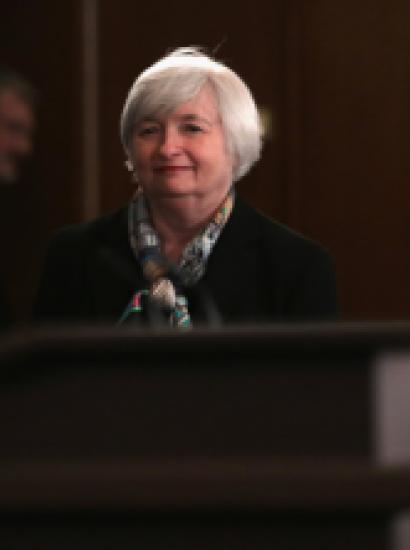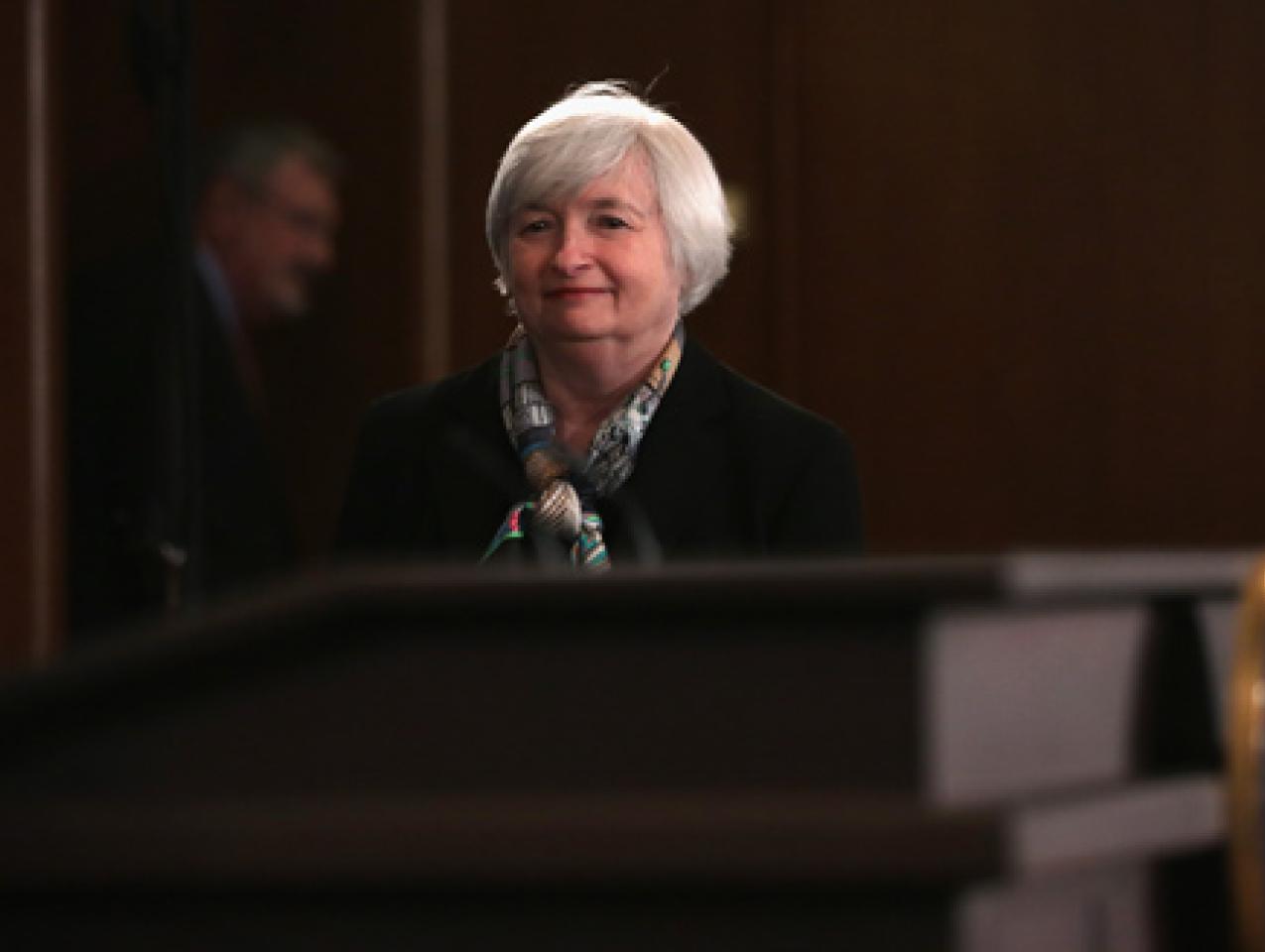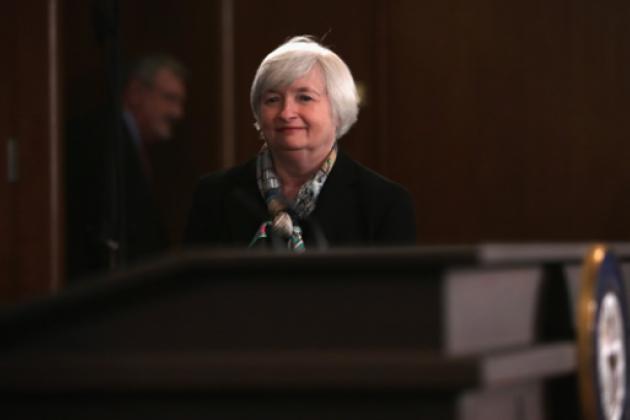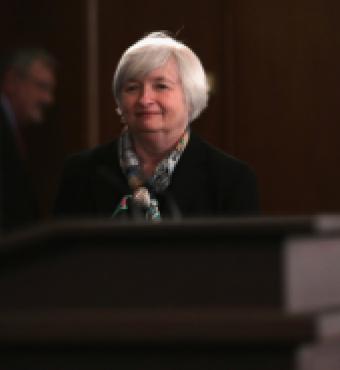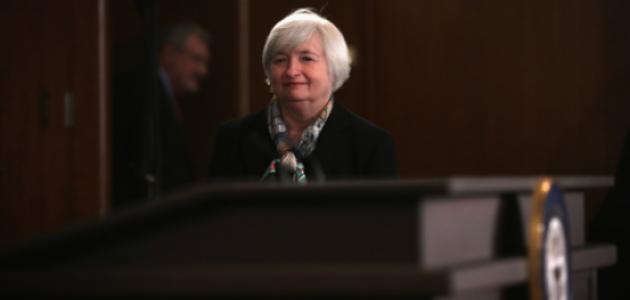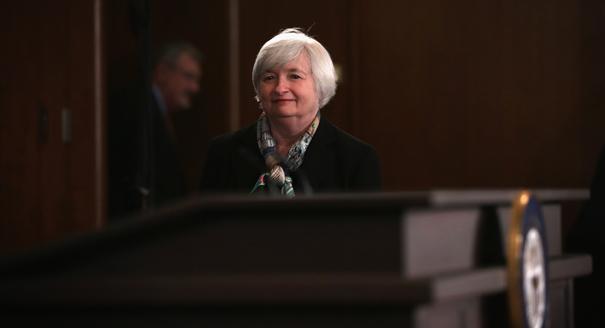The new Federal Reserve chair just had a stellar inaugural news conference, and kudos to her. I said months ago that she was the "safer" choice, and I think President Obama deserves credit for appointing her. With that said, there is a subtle danger in the language she is using to describe how the central bank now sees the economy and understands the limits of its power.
POLITICO describes the shift:
The Fed has previously said that the magic number for when it might begin to consider raising short-term interest rates is when unemployment hits 6.5 percent. But with that number within reach — it currently stands at 6.7 percent — Yellen and the Fed simply dropped using the target as an indicator, instead referring to more vague “labor market conditions.”
This is an error. What seems rather tiny is in fact an exponentially risky shift away from neutrality.
In terms of monetary policy, the national rate unemployment is the indicator that matters, not the alternative metrics like EPOP and LFPR that are, in my own words, more accurate assessments of how the people in the economy are experiencing the labor market. Why the contradiction?
Because there are limits to what gunning an engine can do.
Monetary policy is one, giant lever in managing the macro economy. A good metaphor is the gas pedal on an automobile. You push harder, the car goes faster. But no matter how hard you push the gas pedal, the engine's design will not change. In this metaphor, engine performance is the equivalent of fiscal policy. Business regulations that are rooted in the 1950s worldview will perform, metaphorically, like a car engine from the 1950s. And when fiscal policy degrades the engine's quality – reduces the number of cylinders, cuts a few wires, uses cheaper gasoline, neglects maintenance on depreciating components – all things which slow the car down, there's nothing monetary policy can do to fix those things. And here’s the point: it should not try to compensate.
Right now, fiscal policy is harmful to economic growth. The Affordable Care Act, in particular, is a huge drag on labor supply to the tune of reducing the equilibrium number of jobs by over 2 million workers, something acknowledged and awkwardly celebrated by the Obama administration. Even worse, as my colleague Edward Lazear describes as the "hidden rot in the jobs numbers" in a recent column, the ACA is eroding work hours. Thus "labor market conditions" like the employment-to-population ratio (EPOP) and labor force participation rate (LFPR) are relatively depressed. That's a tragedy, literally, for the nation, but it does not mean that the economy is off equilibrium. Nor that it needs stimulative correction.
Monetary policy should aim to maintain stability in the economy's equilibrium, which is exactly what the unemployment rate signals. Now a 6% unemployment rate is a pretty accurate indicator of equilibrium. It may be a shabby equilibrium under President Obama or a joyous one under President Clinton, but the Fed will err in trying to change an equilibrium, regardless if it was born of ill-fated laws.
This is the lesson of the dead Roman Empire. Centuries of degraded economic performance left the Emperors in the mid Second century A.D. in dire budgetary straits. Their response was to increase the money supply by minting more and more coins, diluting the silver quality slightly each time. A Roman denarius was fifty percent silver in the year 240, but thirty years later new coins were 2 percent silver. They did not know what they were doing, nor could they understand the hyperinflation that destroyed markets across the continent.
As for America, the wonky, subtle shift away from the keystone indicator of labor market equilibrium will become a much more serious discussion in the years ahead.
Tim Kane is an economist and research fellow at the Hoover Institution at Stanford University. Kane’s most recent book is Balance: The Economics of Great Powers from Ancient Rome to Modern America, coauthored with Glenn Hubbard.








